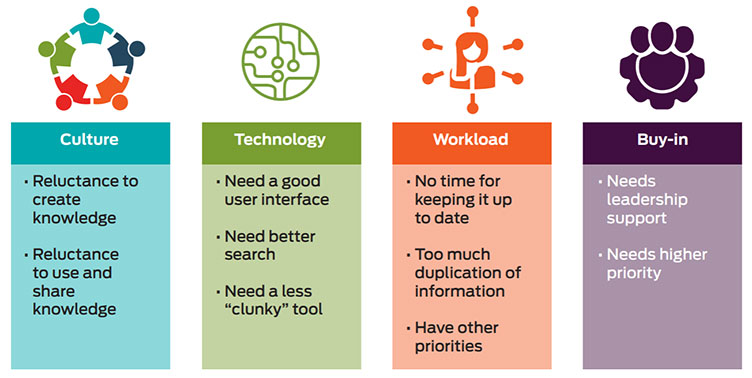Date Published February 11, 2020 - Last Updated September 2, 2020
When HDI asked a group of IT executives about their current priorities, a majority of respondents (60%) said that their top priority for the coming year is business transformation. According to Wikipedia, "Business Transformation is the process of fundamentally changing the systems, processes, people and technology across a whole business or business unit, to achieve measurable improvements in efficiency, effectiveness and stakeholder satisfaction.” In her recent SupportWorld post, The Great Executive Challenge Facing Leaders in the Next Decade, Patti Blackstaffe noted, “Quickly advancing technologies will shift all areas, processes, roles and functions of organizations in ways we are only beginning to understand.”
Are we talking about Digital Transformation? Well, yes, but we need to be clear on what that means. In an interview for HDI’s SPOCcast podcast, Charles Araujo, founder of the Institute for Digital Transformation, said:
From my standpoint, Digital Transformation is sort of a bad term, because it’s not really about the digital per se; it’s really about business and organizational transformation—but even more than that it’s about the shift in power away from the organization and to the customer.
Technology is moving forward in unforeseen directions at an amazing pace, leaving senior leaders to wonder when, where, and how to spend their limited budgets. Add to that the challenges of actual implementation. HDI’s constituents consistently list “implementing new technologies” as a top challenge.
Join senior leaders for expert guidance, networking, and coaching at Executive Connections at SupportWorld Live!
Learn more!
According to CIO.com, the competition for spending priorities was stiff in 2019, with increase operational efficiency and increase cybersecurity protections each garnering 40% of survey responses. Other top priorities included improve customer service and, of course, growing the business.
Meanwhile, we all keep seeing and hearing references to Artificial Intelligence and Machine Learning almost everywhere. Will these emerging technologies simplify or complicate life for senior IT and business leaders? Will the investments in them garner the intended results, or are we chasing rainbows? More importantly, how will we know?
The key questions we should be asking are:
- What are we trying to accomplish?
- What organizational and cultural changes are needed to accomplish the goal?
- How will this technology help us get there?
The goal is first; technologies are only enablers of achieving it.
Shiny new technologies such as cognitive computing, AI, bots, the Internet of Things (IoT), personalization, and machine learning have their intrinsic conceptual appeal, but novelty should not be confused with business value.—Seth Earley
Perhaps, then, the first question we need to ask about our need to invest in new technologies is whether the technology helps us enable our customers and stakeholders to do things they could not previously do.
The first question to ask is whether the new technology helps us enable our customers to do things they could not previously do.

Let’s look at an example. When was the last time you had to visit a bank branch to perform a routine transaction such as making a deposit, transferring money, or applying for a loan? The technologies now in use in the financial world enable customers to access information and perform actions on their own. The banks have shifted power to the customers. Another example of this kind of shift is in the rideshare industry, where power has been shifted from taxi companies literally into the hands of riders.
The analogy for IT is the service desk. We should be asking, “What can we provide for end users that empowers them to act on their own behalf—to order the technology and resources they need and to help themselves when they have a question or an issue?” This is where some substantial strides are being made, especially in the area of self-service technologies.
Recent HDI research found that “The largest segment of organizations that have put user-facing knowledge in place did so because users asked for it,” but also found that only about one-third of organizations were very satisfied with their knowledge management programs. One of the main reasons stated for less-than-complete satisfaction? “We can’t get users to adopt it.”
Users are asking for a substantial change but are not adopting it when it is offered.
Respondents’ comments—and there were hundreds—on the problems within their knowledge programs fell into four distinct categories.

It’s fairly easy to see in this example how the culture, the work priorities, the leadership, and the technology are interdependent. The same is true about other enterprise technology initiatives.
Looking at technologies in isolation is not helpful in getting at the root of the problems facing today’s organizations. We need to see the cultural context and shape initiatives so that the priorities in our work are aligned with the goals we are trying to achieve.
 Roy Atkinson is one of the top influencers in the service and support industry. His blogs, presentations, research reports, white papers, keynotes, and webinars have gained him an international reputation. In his role as Group Principal Analyst, he acts as HDI's in-house subject matter expert, bringing his years of experience to the community. He holds a master’s certificate in advanced management strategy from Tulane University’s Freeman School of Business, and he is a certified HDI Support Center Manager. Follow him on Twitter @RoyAtkinson.
Roy Atkinson is one of the top influencers in the service and support industry. His blogs, presentations, research reports, white papers, keynotes, and webinars have gained him an international reputation. In his role as Group Principal Analyst, he acts as HDI's in-house subject matter expert, bringing his years of experience to the community. He holds a master’s certificate in advanced management strategy from Tulane University’s Freeman School of Business, and he is a certified HDI Support Center Manager. Follow him on Twitter @RoyAtkinson.